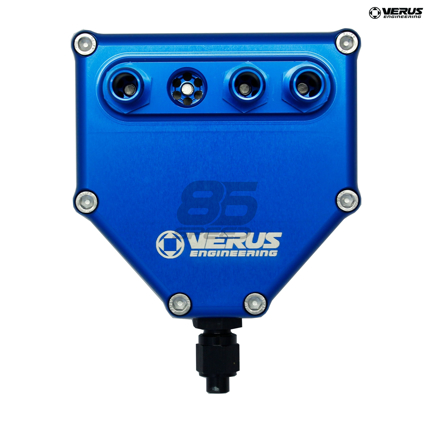Air separator, oil separator, and gas-liquid separator are essential equipment used in numerous industrial processes. They play a crucial role in the separation of air, oil, and gas from a liquid substance. These separators employ different techniques, making them applicable in diverse industrial applications. In this blog, we will understand the significance of air-oil and gas-liquid separators in industrial processes.

Air-Oil Separator:
Air-oil separator, as the name suggests, is the equipment used to separate air and oil from a liquid substance. It is often used in hydraulic systems, compressors, and engines. Air introduced in the system can create problems such as cavitation, aeration, and noise, eventually leading to equipment failure. Cavitation can erode or corrode metal surfaces and create damaging fluid waves that can lead to machine failure. Aeration causes the compression ratio to decrease, reducing efficiency. Also, the dissolved air lowers the lubrication capability of the oil, further causing wear and tear. To avoid such situations and maintain the optimal level of the machines, air-oil separators are used.
An air-oil separator works on the principle of gravity and coalescence. Once the air-oil mixture enters the separator, it passes through a multi-stage filtration process, where the air bubbles combine to form larger bubbles and ultimately separate from the oil. The larger bubbles, being less dense, rise to the top, and the oil flows out from the bottom.
Oil Separators:
Oil separators are primarily used to remove oil from wastewater. In the industrial process, wastewater is often contaminated with oil that needs to be separated before disposal. Industrial sites such as refineries, gas stations, and vehicle repair shops are major culprits for releasing wastewater contaminated with oil. Failing to extract oil from wastewater can lead to environmental hazards, causing air, water, and soil pollution.
Oil separators work on the principle of gravity separation. Oil and water are immiscible, and thus, they form two separate phases when kept undisturbed. The separation unit creates a quiescent zone, allowing the oil to float up and water to settle down. The separated oil is stored for recycling, while the clean water is either reused or released into the environment.
Gas-Liquid Separator:
Gas-liquid separator removes gas or vapor from liquid substances in industrial processes. It is used in processing plants that deal with natural gas, petroleum, and chemical industries. These plants often have a large number of processing units, including pipeline transportation systems, where gases need to be removed from liquid streams before transporting. Failure to remove gases can lead to choking, as the gas blocks the pipeline and decreases efficiency.
Gas-liquid separators work on the principle of impingement and centrifugal force. When the mixture enters the separator, the liquid droplets change direction, colliding with other droplets and causing impingement. The gas escapes from the top, and the liquid is drained from the bottom.
Conclusion:
Air separator, oil separator, and gas-liquid separator are essential components of industrial processes. They improve the efficiency of machines and also play a vital role in reducing environmental hazards. The significance of separators lies in the separation of unwanted elements from the liquid, and it is essential to choose the right separator for a particular application. The selection process should take different factors into consideration, such as flow rate, fluid properties, and environmental hazards. With the right separator in place, industrial processes can run smoothly, with minimum to no problems.
